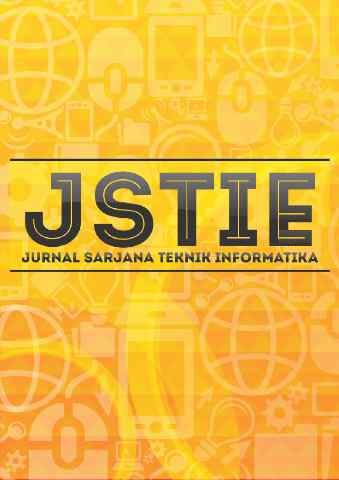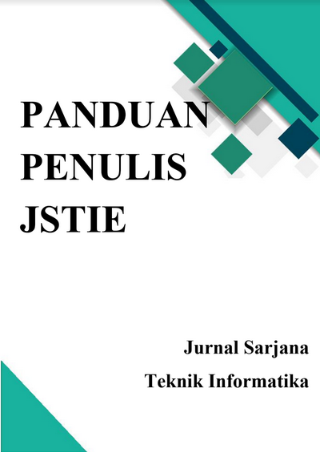Aplikasi Mobile Pengenalan Hewan Bagi Siswa SD dengan Augmented Reality
DOI:
https://doi.org/10.12928/jstie.v9i3.21872Keywords:
Augmented Reality, Mdlc, Hewan, SmartphoneAbstract
Pendidikan adalah hal krusial bagi masa depan, baik itu pendidikan formal, non formal, ataupun pendidikan informal. Dengan perkembangnya tekhnologi di dunia pendidikan, terutama augmented reality juga masuk bagian untuk memajukan global yang pada awalnya hanya dipakai buat bersenang-senang saja. Dari data kuisoner ditemukan masalah bahwa siswa ketika belajar tatap muka 49,2% tidak paham, ketidaktertarikan siswa dalam belajar hewan di smartphone 33,3%, siswa yang tidak menyukai binatang 30,3%, dan siswa yang tidak menyukai pelajaran IPA 33,3%. Penelitian ini menggunakan metode Multimedia Development Life Cycle (MDLC) yang memiliki enam tahapan yaitu, concept, design, material collecting, assembly, testing, dan distribution. Pengujian aplikasi menggunakan pada metode alpha test, beta test, sus dan uji keefektifan yang merupakan pengujian script/program dari fungsi berdasarkan aplikasi. Penelitian menghasilkan perangkat lunak Aplikasi Mobile Pengenalan Hewan bagi Siswa SD dengan Augmented Reality dengan memperoleh hasil dari alpha test 100% bahwa aplikasi lolos tanpa perlu perbaikan, beta test memperoleh hasil 97% bahwa aplikasi layak digunakan, dan SUS memperoleh hasil 82,5 bahwa aplikasi layak digunakan. Berdasarkan semua pengujian tersebut disimpulkan bahwa aplikasi ini layak untuk pembelajaran mengenai pengenalan hewan sehingga diharapkan sebagai metode baru dalam mempelajari pengenalan hewan.References
S. Panjirai and B. Robiin, “Augmented Reality Sebagai Media Pembelajaran Penggambaran Ekosistem Hewan Darat Untuk Anak Tunarungu,†JSTIE (Jurnal Sarj. Tek. Inform., vol. 9, no. 2, p. 55, 2021, doi: 10.12928/jstie.v9i2.19466.
A. Nauman, Y. A. Qadri, M. Amjad, Y. Bin Zikria, M. K. Afzal, and S. W. Kim, “Multimedia internet of things: A comprehensive survey,†IEEE Access, vol. 8, pp. 8202–8250, 2020, doi: 10.1109/ACCESS.2020.2964280.
C. W. Park, D. gook Kim, S. Cho, and H. J. Han, “Adoption of multimedia technology for learning and gender difference,†Comput. Human Behav., vol. 92, pp. 288–296, 2019, doi: 10.1016/j.chb.2018.11.029.
M. Mustika, E. P. A. Sugara, and M. Pratiwi, “Pengembangan Media Pembelajaran Interaktif dengan Menggunakan Metode Multimedia Development Life Cycle,†J. Online Inform., vol. 2, no. 2, p. 121, 2018, doi: 10.15575/join.v2i2.139.
Y. M. H. Listiana Dewi, Sutama, “Strategi Quantum Learningdalam Pembelajaran Matematika di Sekolah Dasar,†J. basicedu, vol. 3, no. 2, pp. 524–532, 2019.
A. Z. Rahman, T. N. Hidayat, and I. Yanuttama, “Media Pembelajaran IPA Kelas 3 Sekolah Dasar Menggunakan Teknologi Augmented Reality Berbasis Android,†Semin. Nas. Teknol. Inf. dan Multimed., vol. 5, no. 1, pp. 4-6–43, 2017, [Online]. Available: http://ojs.amikom.ac.id/index.php/semnasteknomedia/article/view/1797.
R. T. Lolowang, A. S. M. Lumenta, M. D. Putro, K. Perabot, and A. Reality, “Penerapan Augmented Reality 3 Dimensi Berbasis Android Untuk Menentukan Letak Perabot Dalam Rumah,†J. Tek. Inform. Unsrat, vol. 11, no. 1, p. 142109, 2017.
A. L. N. Reddy and J. C. Wyllie, “I/O Issues in a Multimedia System,†Computer (Long. Beach. Calif)., vol. 27, no. 3, pp. 69–74, 1994, doi: 10.1109/2.268888.
J. Carmigniani, B. Furht, M. Anisetti, P. Ceravolo, E. Damiani, and M. Ivkovic, “Augmented reality technologies, systems and applications,†Multimed. Tools Appl., vol. 51, no. 1, pp. 341–377, 2011, doi: 10.1007/s11042-010-0660-6.
S. L. Rahayu, Fujiati, and R. Dewi, “Educational Games as A learning media of Character Education by Using Multimedia Development Life Cycle (MDLC),†2018 6th Int. Conf. Cyber IT Serv. Manag. CITSM 2018, no. Citsm, pp. 1–4, 2019, doi: 10.1109/CITSM.2018.8674288.
Downloads
Published
Issue
Section
License
License and Copyright Agreement
In submitting the manuscript to the journal, the authors certify that:
- They are authorized by their co-authors to enter into these arrangements.
- The work described has not been formally published before, except in the form of an abstract or as part of a published lecture, review, thesis, or overlay journal. Please also carefully read Journal Posting Your Article Policy.
- The work is not under consideration for publication elsewhere.
- The work has been approved by all the author(s) and by the responsible authorities – tacitly or explicitly – of the institutes where the work has been carried out.
- They secure the right to reproduce any material that has already been published or copyrighted elsewhere.
- They agree to the following license and copyright agreement.
Copyright
Authors who publish with Jurnal Sarjana Teknik Informatika agree to the following terms:
- Authors retain copyright and grant the journal right of first publication with the work simultaneously licensed under a Creative Commons Attribution License (CC BY-SA 4.0) that allows others to share the work with an acknowledgement of the work's authorship and initial publication in this journal.
- Authors are able to enter into separate, additional contractual arrangements for the non-exclusive distribution of the journal's published version of the work (e.g., post it to an institutional repository or publish it in a book), with an acknowledgement of its initial publication in this journal.
- Authors are permitted and encouraged to post their work online (e.g., in institutional repositories or on their website) prior to and during the submission process, as it can lead to productive exchanges, as well as earlier and greater citation of published work.








